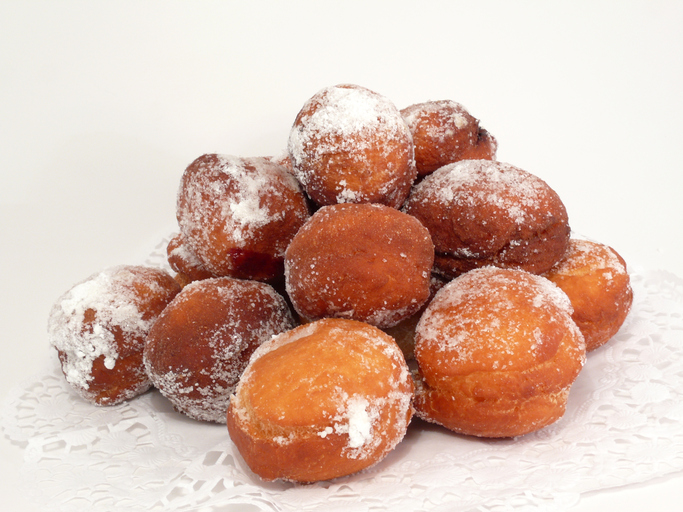This New Year’s Eve people all around the world will clink glasses and toast to the coming year. In the U.S., Midwesterners will cook pork and sauerkraut, while Southerners will feast on black-eyed peas and collard greens. Traditions like these vary around the world, but all have one thing in common — wishes for good luck and prosperity in the coming year. Here are some other fun ways folks will hope to find good fortune with the turn of the calendar.
Spain: Grapes
In Spain some revelers will celebrate the New Year by eating twelve grapes at midnight. Each fruit is said to represent 1 month of the year, so for instance, if the second grape is sweet, February will smooth sailing. If the third grape is sour, March could get rocky.
 Italy: Lentils
Italy: Lentils
Since lentils resemble little coins, it’s thought eating them on New Year’s will bring wealth and prosperity.
 Scotland: Whiskey
Scotland: Whiskey
Hogmanay, or New Year’s Eve, is celebrated with a midnight toast. Then “first footing” begins, with neighbors inviting each other into their homes for food and drinks. The first-foot is the first non-resident of the house to enter through the door, usually bringing with them a coin (silver is considered good luck), bread, salt or whiskey. According to the superstition, a tall, dark, handsome man will bring good luck, while a woman or fair-haired man will bring poor luck. The Scottish also bellow out several rounds of Auld Lang Syne, the famous NYE tune written by Scotland’s national poet, Robert Burns.
Poland: Pickled Herring
Pickled herring and other smoked or pickled fish typically ring in the New Year for the Polish. It is thought that a prosperous and plentiful new year will follow.
China: Dumplings (jiaozi)
Shaped like ingots, or an early form of Chinese money, jiiazo are recognized as a sign of longevity and lasting wealth. The dumplings are eaten on the Chinese New Year which falls at the end of January.
Cuba & Austria: Roast suckling pig
Both countries believe pigs represent good luck and fortune. A traditional New Year’s Eve celebration in either country will include roasted suckling pig for guest to eat at midnight.
India: Lentils and rice
Recognizing lentils’ likeness to coins, Indians celebrate New Years Eve with a bowl of the tiny legumes and rice to usher in wealthy vibes for the coming year.
Turkey: Pomegranate
The Turkish will eat pomegranate on New Year’s as a symbol of abundance and fertility.
El Salvador: Egg
At 11:59 p.m., El Salvadorians will rush and crack an egg into a glass of water. At the stroke of midnight, everyone must decide what their yolk resembles. This is thought to be a peek into what the new year has in store.
Greece: Vasilopita
Vasilopita is a round sweet bread with a coin hidden inside baked for New Year’s celebrations. The coin is said to bring good luck to whoever finds it.
Japan: Soba noodles
On New Year’s Eve, this classic dish is called toshi-koshi, or “from one year to another.” The long, buckwheat noodles symbolize a long life. The longer they are, the better. At midnight, the Japanese are supposed to slurp down the noodles without cutting them.
Mexico: Rosca de Reyes
A bread ring is baked with a trinket inside. The loaf is then topped with candied fruit. Whoever finds the trinket will find good luck in the new year.
Holland: Oliebollen
Oliebollen translates to oily balls. These dough balls have been rolled with dried raisins or currants, fried and covered in powdered sugar. According to legend, those who ate the oliebollen would survive the wrath of the Pagan goddess Perchta. Her sword would slip off of the stomachs of those who ate enough of the greasy food.
 Germany: Berliner
Germany: Berliner
Berliner, or Krapfen, are a type of doughnut filled with fruit jam topped with powdered sugar popular at New Year’s Eve gatherings in Germany.
Argentina: Beans
Argentinians eat beans on New Year’s Day in hopes that they will stay employed or find a new, better job.
Sweden and Norway: Rice pudding
A single almond is often placed in the popular New Year’s dessert, rice pudding. Whoever finds the nut will have good fortune in the upcoming year.
Denmark: Throwing dishes and jumping off chairs
The idea goes that you can jump off a chair at the stroke of midnight and leap into a more fortuitous year. Also, throwing dinner plates at a neighbor’s door can symbolize friendship. Lots of broken plates means lots of friends.
Also see, most popular Christmas candy by state.




